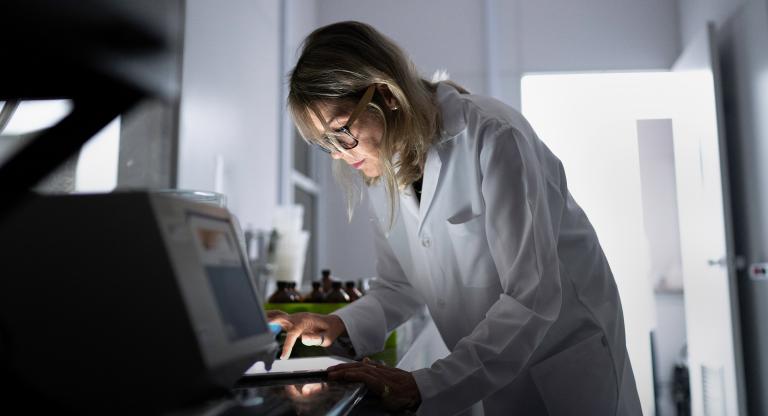Giving Tuesday campaign helps enable Virtual ICU for more patients

On Giving Tuesday, Sinai Health donors rallied together to raise $47,000 to create a “Virtual ICU” at Mount Sinai Hospital. The campaign was spurred by Tom and Anna Koffler through the generosity of the Koffler Foundation, who offered to match every dollar donors gave up to $25,000, to double the impact of their giving.
“With these funds, we can equip 14 regular hospital beds with advanced patient monitoring equipment, which will let medical teams remotely monitor key vital signs,” says Dr. Luke Devine, physician and Site Lead of the Division of Internal Medicine at Mount Sinai Hospital.
Dr. Devine explains that the technology could be life-saving. It will dramatically grow the hospital’s capacity to provide a higher level of care for a larger number of patients.
“In Mount Sinai’s regular inpatient units, nurses can only visit and chart patients’ oxygen and respiratory levels about once every four hours,” says Dr. Devine. “Each time health-care workers enter the room of a patient with COVID-19, they must take extra time to don and doff full personal protective equipment.”
"I think I got this thing beat. A huge thanks to the love and support of family, friends, strangers and communities, as well as a HUGE Thank You to all staff at Mount Sinai Hospital."
- Brad's first COVID-19 Instagram post on March 22 showed him intubated and conscious in Mount Sinai's ICU.
With this technology, patients in Virtual ICU beds can be monitored with vigilance almost as though they were in an ICU. A nurse could, for example, check an entire ward remotely every half hour to ensure everyone is doing well. Remote monitoring will also keep patients and staff safe, and help preserve precious PPE supplies.
“Virtual ICU technology will allow nurses to focus much more of their time on delivering the bedside care that patients need to recover," Dr. Devine explains.
Sinai Health Foundation is still fundraising to equip more beds with Virtual ICU technology.
Benefiting patients beyond COVID
The COVID-19 pandemic spurred Mount Sinai’s urgent need for remote monitoring on more hospital beds. But even after the pandemic wanes, the new Virtual ICU monitors will grow capacity across the hospital.
For example, in Mount Sinai’s Newton Glassman Neonatal Intensive Care Unit, Virtual ICU technology will allow teams to monitor brain oxygen levels among more of Ontario’s most fragile babies. It will also support the booming number of patients who count on the Schwartz/Reisman Emergency Centre, and help surgical teams monitor patients coming out of surgery. Of course, the technology will be invaluable to help teams respond to future outbreaks of other infectious diseases.
“The Virtual ICU will elevate the monitoring and care we can provide for patients with COVID-19, and keep our front-line workers safer,” says Dr. Devine. “It will also enhance our ability to monitor many other patients who are on the borderline of needing intensive care."









